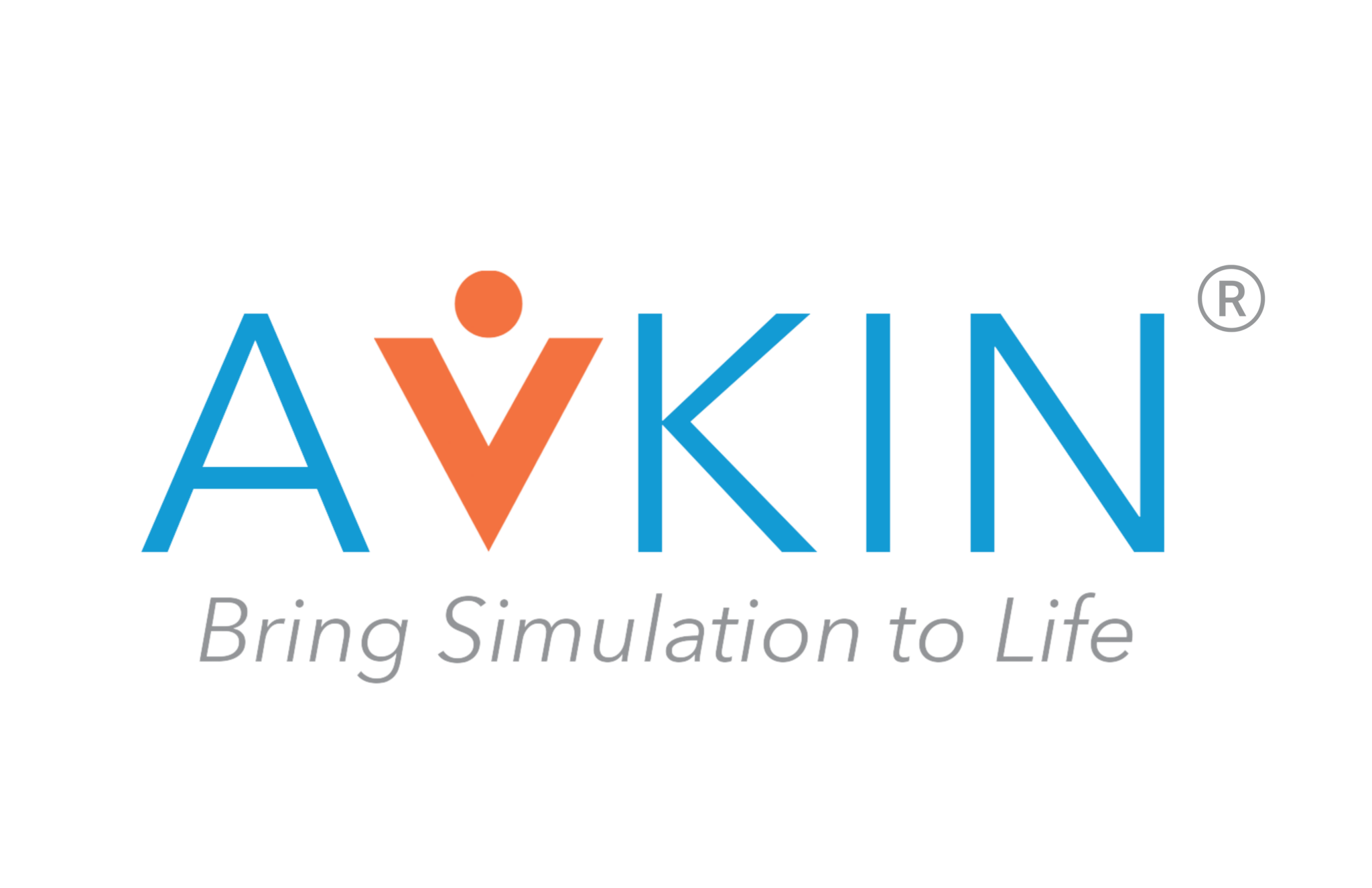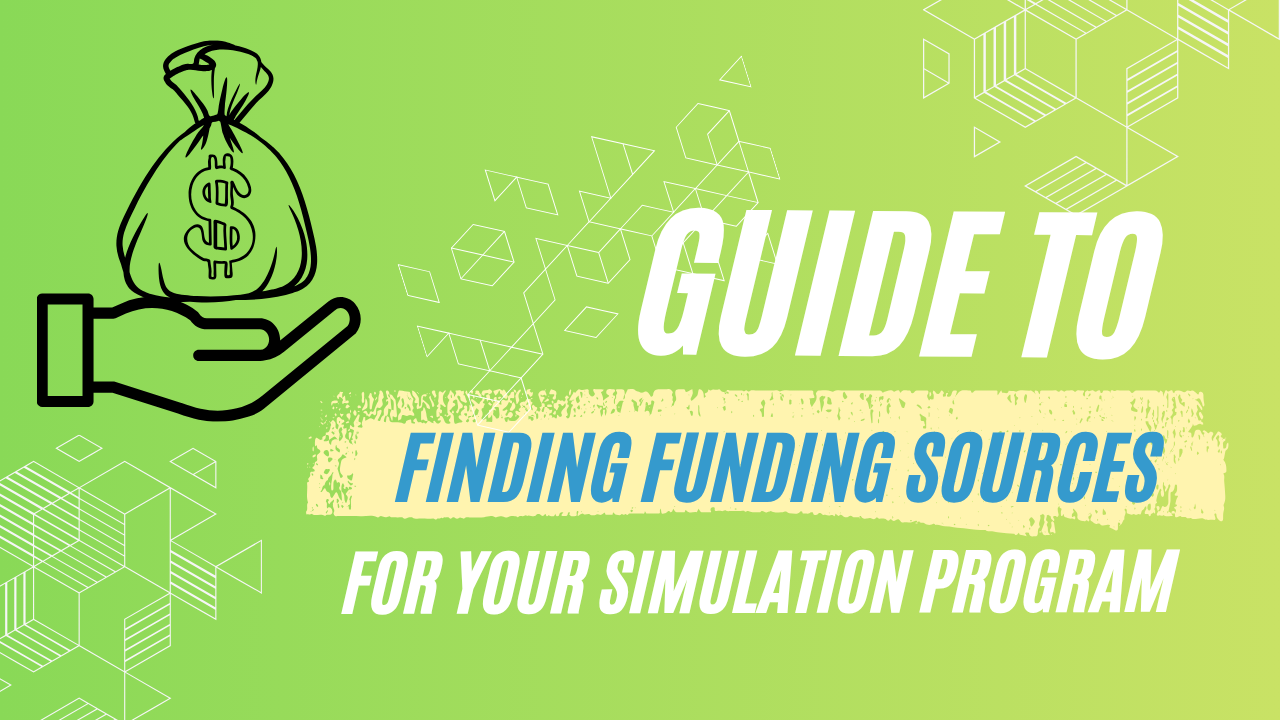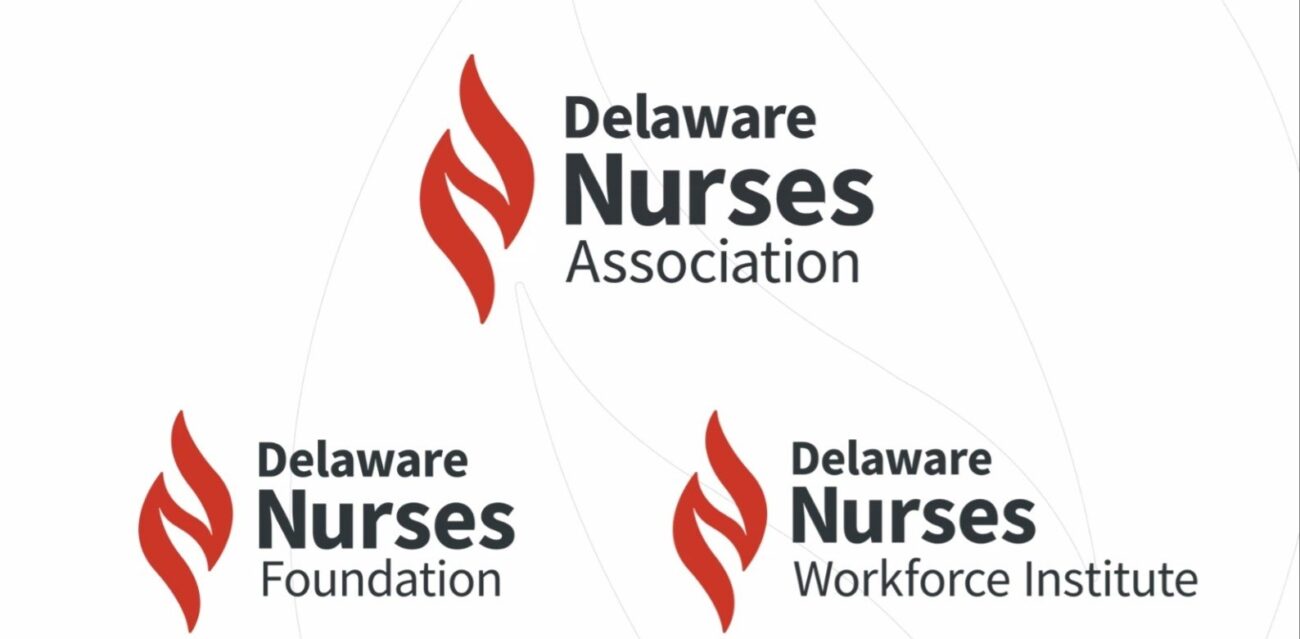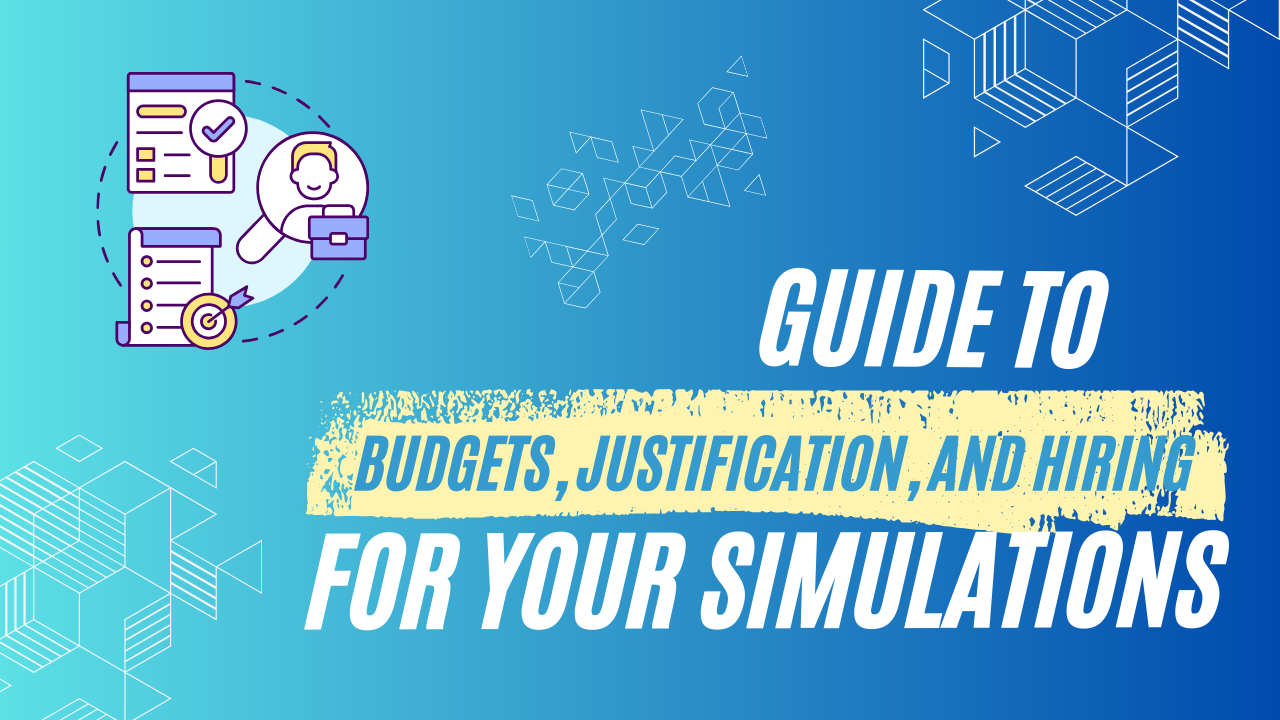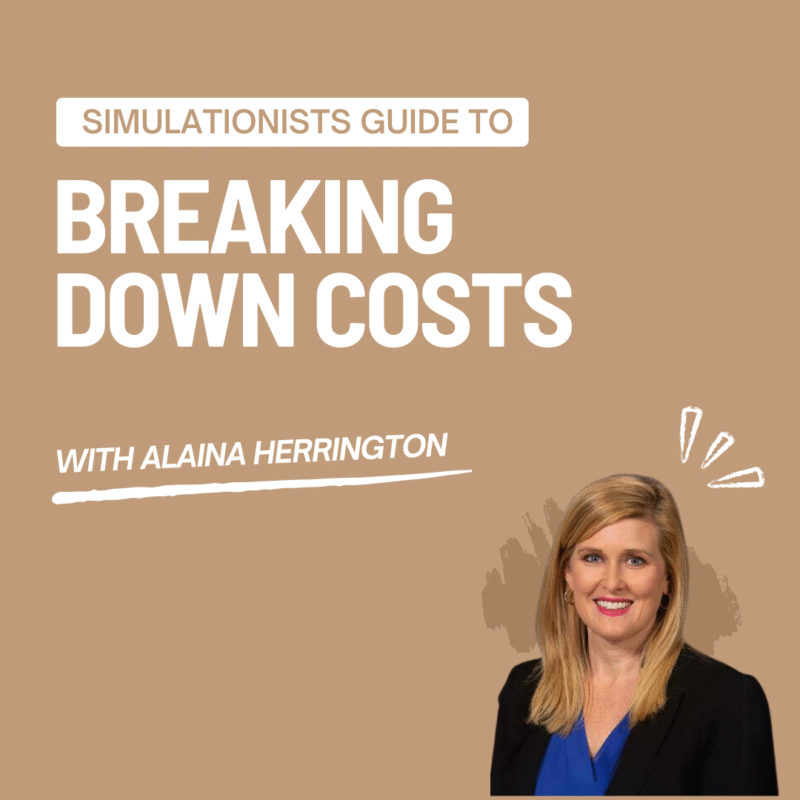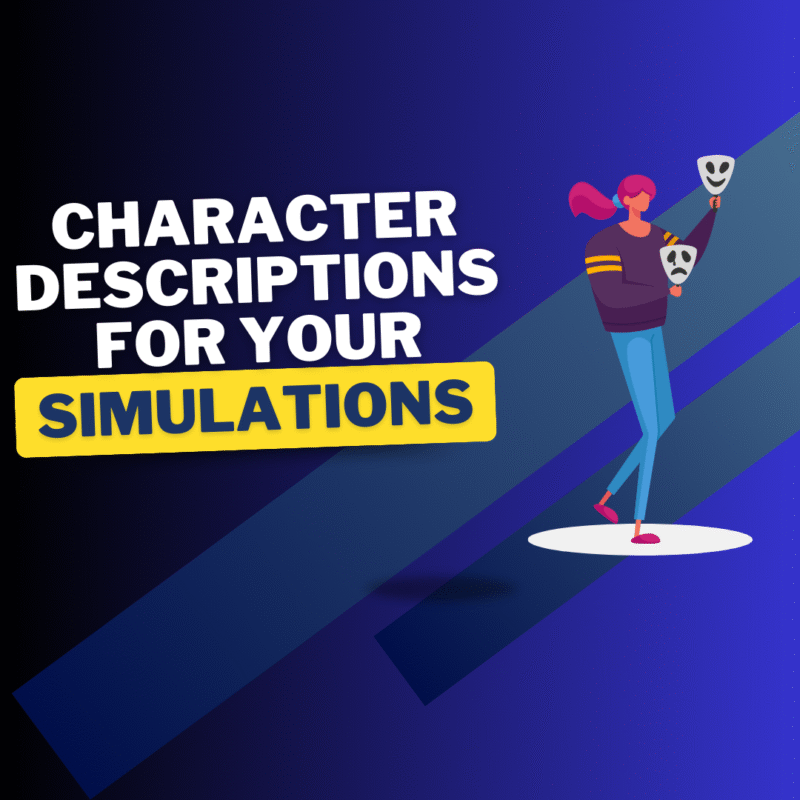Advocating for Legislation in Simulation
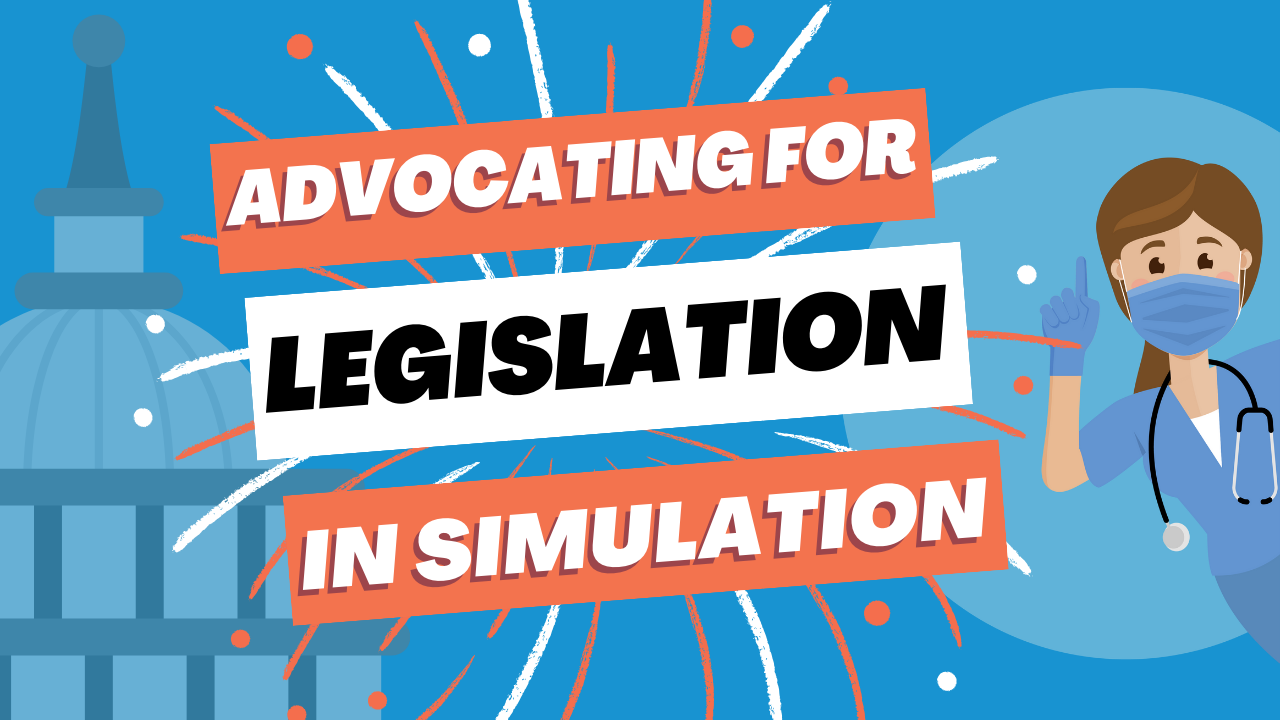
Healthcare simulation is an invaluable tool in healthcare education and training, allowing healthcare professionals to practice their skills in a safe and controlled environment. Advocating for legislation in this field has become increasingly important to ensure that it’s properly recognized, regulated, and integrated into the healthcare system.
Legislation can help create standards and regulations for healthcare simulation, ensuring that training programs are designed to enhance patient safety. Healthcare professionals who receive rigorous simulation training are better equipped to provide high-quality care, reducing medical errors and adverse outcomes.
Amy Cowperthwait CEO, RN, MSN, CNS, CHSE-A and Megan Weldon sit down with Simulation Nation this week to talk about how you can advocate, who is advocating and what specifically they are advocating for!.
If you enjoyed our guide to designing a simulation lab, check out more episodes of Simulation Nation below, and subscribe to our podcast and Youtube so you never miss an episode!
Full Transcript:
00;00;00;00 – 00;00;07;08
Nate
This episode of Simulation Nation is brought to you by asking your one stop shop for wearable simulators and everything. Standardized patient
00;00;07;08 – 00;00;30;21
Megan
Hello, everybody, and welcome to Simulation Nation. We are going to be talking about how to advocate for simulation in a lot of different ways. And I’m really excited to kind of dive into all the different ways that people can be advocates.
00;00;30;25 – 00;00;49;22
Amy
Yeah, and I think it’s really important to define what advocacy is in the beginning because, again, health professionals, we understand the idea of being a patient advocate, right? And that we are speaking for someone who can’t or won’t speak for themselves and that concept or that idea behind it. But really advocacy is that same idea, but taking it to a larger level.
00;00;50;01 – 00;01;07;23
Amy
So the definition that I looked up was any action that speaks in favor of recommends, argues for a cause, supports or defends or pleads on behalf of others. So the idea of really supporting what we do within health care simulation at a larger level beyond the the typical group of people that you’re rubbing shoulders with.
00;01;10;09 – 00;01;34;16
Megan
Yeah. And I think that the important piece is that when we think of advocacy, I think that oftentimes it’s kind of this big grand, huge concept that doesn’t feel attainable. It doesn’t feel like the person who, you know, maybe has a year under their belt doing simulation feels like the appropriate person to move forward with advocacy, because I think a lot of times we think of it as at the governmental level, it’s kind of like, well, that’s what it is.
00;01;34;16 – 00;01;56;01
Megan
We’ve got it. We’ve got to be rubbing shoulders with, you know, all these different people. But really, I think everyone can be an advocate, especially looking at it through that lens of definition, is that this is more or less us just branching out from our own SIM centers, us branching out, and who we talking to and discussing what it is that we’re doing in simulation, why we started in simulation.
00;01;56;01 – 00;02;16;08
Megan
I think people’s personal stories of why this is impactful for them has so many reasons across the board for for the reasons why we’re involved in it. And I think that it’s just that concept that anyone can do it. So don’t think that this has to be the simulation giants. The people have been around for 20 and 30 years that they’re the only ones who can move forward with advocacy.
00;02;16;10 – 00;02;34;04
Megan
Everyone can. And the more that we look to our neighbor or somebody else to do it, the less people that are going to be there. But the more that we can all kind of stand together to move forward, discuss it, share our vulnerabilities. Then you are an advocate, then you are you are actually going forward with advocacy for that simulation.
00;02;34;04 – 00;03;04;15
Amy
And I think, again, Haruo Acuna, who was the SSH president this was kind of his platform. This is what he chose as the president. And I think that it’s because we just don’t do a really good job. I remember when I first started the RFP program at the university and we started it by we had no money. It was 2008 2009, but we started it by building a first, an independent study course and then a three credit course.
00;03;04;17 – 00;03;20;25
Amy
And I just remember for two and a half years my head was down and I was working so hard to get some in to get them integrated into the curriculum, to write SP Sims, to get, you know, to do the learning. And then all of a sudden I was like, I have to think I have to tell other people about what we’re doing.
00;03;20;25 – 00;03;25;20
Amy
This is really cool. And again, I chose to do that within the simulation community because
00;03;25;20 – 00;03;40;12
Amy
it was something specific for simulation, but there is still ways to get the word out about what you’re doing and to bring awareness to health care simulation in other ways or another facet to that really is it. It’s not going to require a huge amount of time or energy.
00;03;40;14 – 00;04;04;23
Amy
One of the things that I never thought about again, being a health care provider and being an educator is the media would love the opportunity to come and write a story on this. I don’t know. Nate, our our producer here, Can you talk a little bit about how they have to have filler time or there’s time within the media to make to to do like human stories about good things that are happening in this world, I guess is the best way to put it.
00;04;09;14 – 00;04;10;05
Nate
Sure. Yeah.
00;04;10;05 – 00;04;32;06
Nate
Yeah. So basically a lot of the media companies I’ve come to start doing a lot of community involvement because we’ve strayed from that. So I think that’s what you’re kind of getting at here. It’s the smaller groups focusing on the more niche stuff that’s going on within the community instead of widespread, because we’re getting that from all the major publications or the Twitters, the Facebooks, the large media and news groups.
00;04;32;08 – 00;04;40;22
Nate
So a lot of them are starting to fill in that very small, more intimate kind of content a lot more.
00;04;40;22 – 00;05;13;24
Amy
Yeah. And I would say that I think that this the content here is relating to health care, which is, again, something that’s really timely and important, I think throughout times in history is, you know, making health care better. But it’s also something to do with, you know, educate. And it is also the idea of it’s very visual. And so if it is if it is a, you know, news cast and they’re bringing in media, then you they want to do a video of something that you’re doing.
00;05;13;24 – 00;05;36;13
Amy
So again, not that you would necessarily do it added you want to have volunteer students doing a simulation. It doesn’t need to be during normal simulation times, but I never knew this. But you can call the marketing department within your institution and have them contact the media for you. I remember when we did at Duquesne, we went and did a what was it visit Media day.
00;05;36;13 – 00;05;41;12
Megan
We media day, lighting it and then putting it out during National HealthCare Sim Week.
00;05;41;14 – 00;06;16;26
Amy
But one of the things that their marketing team said to the decay nursing simulation is, was we have to come here more often right So the idea you know, a lot of times learning happens in classrooms and it’s not all that exciting. It’s not that visual. All right. And I think that this is something that it really gets to highlight some of the cool things that you’re doing and getting interviews with your students and having them share how that has impacted their clinical learning or having students come back who are fairly new graduates and talking about how simulation learning has impacted them as they transitioned into a professional role.
00;06;16;28 – 00;06;36;06
Amy
All those kinds of things. It’s not you know, it’s not necessarily knocking on the legislature’s door, but it is making a phone call or two to the marketing department and saying, hey, we’d love to to invite the news to come in as we unveil our new SIM lab, or if we are doing a different simulation. If you think about, like things that are timely.
00;06;36;07 – 00;06;57;23
Megan
Even being new technology, like it doesn’t even need to be a new SIM center. It can just be that you got a new piece of technology or you’re including a new simulation that has to do with cardiac arrest or I mean, if you do a disaster day or something that is a little bit bigger, all of those things lend themselves very well to wanting to have people come in and be able to share a story on it.
00;06;57;26 – 00;07;03;14
Amy
Like diversity, equity, inclusion, super timely, right? So those types of things are the things that they
00;07;03;14 – 00;07;25;10
Amy
like to share and it’s something that they’ll do a few seconds, a few minutes segments on again, locally or regionally, just depending on who you invite. I know for us we were based in Delaware and we were out of Newark, Delaware, but we had the newspaper come and take pictures and you know, they did a series spot spot on it.
00;07;25;12 – 00;07;47;04
Amy
We’ve had six NBC News come out and that’s NBC, I should say, you know, one of the major networks. But it was just for the Philadelphia area. So the more you can think about that and the more that your marketing team gets excited about it, the more they’re going to be sharing that with other people and trying to get people in it does lead to philanthropic opportunities as well.
00;07;47;07 – 00;08;07;06
Amy
So it is something that to, you know, it’s not just a benefit from the idea of being an advocate for health care simulation and and getting the word out. But it is also potentially something where, you know, you can also express what your needs are and maybe somebody who has a philanthropic brain. Well, you know, decide that they maybe they were an alumni or something they want to contribute.
00;08;07;06 – 00;08;28;06
Megan
Yeah, I think that it it isn’t even just advocacy, but it’s also being able to really help put your son that are on the map and promote your nursing program or your health professions program, whatever it is, because I think a lot of times because we do it day in and day out, we forget that what we’re doing is so unique and cool and I mean, again, I think it’s very common to also compare yourself to others.
00;08;28;11 – 00;08;59;12
Megan
So my sense that it is not that big or, you know, I don’t have as fancy of a mannequin. I don’t, you know, whatever that may look like. And I think that we just need to remind ourselves as simulations that what we have is good enough and that moving forward with what we have right. And being able to still contact people and bring people in, I don’t want anyone to be feel like they can’t do that if their simulation center with the resources that they have because everybody can do it, everyone can bring in the appropriate people.
00;08;59;15 – 00;09;29;26
Megan
Your marketing team probably already has those contacts. If you don’t have a marketing team reaching out yourself. I remember talking to a dean out in Indiana from a community college and she was saying, We have to compete with the big guys. We have to compete with all these other big universities that have big names, big programs. I’m basically scratching and clawing to get recognition for what we’re doing and for her her big thing was wanting to have as can equipment and being able to talk about the fact that they were doing really innovative things inside of simulation.
00;09;29;28 – 00;09;52;23
Megan
And for her, that was her big movement was working towards their standardize patient program and including hybrid simulation. But for her, I recommended contacting local media, bringing in additional people to be able to show it because you can talk about it and it’s great for tours, but now having media that’s also there shooting video and content, you now can add that to your website.
00;09;52;26 – 00;10;11;13
Megan
Start creating blogs, all of these other pieces that now you can start putting out and creating kind of that digital footprint about what you’re doing inside of your lab. Huge. And it’s very easy. I will say that with news it is always hit or miss if they’re coming or not. If there is a bigger story that happens that day, they are not coming to you.
00;10;11;13 – 00;10;27;20
Megan
That is just the bottom line. Yeah, but tag teaming it along with something else that you’re doing. So if you have a donor event or you’re already planning on doing an open house and you invite them in, great. Beneficial to have them there. Love it, but don’t necessarily sit around waiting because it’s not always a guarantee that they’re coming.
00;10;27;20 – 00;10;40;00
Megan
It’s kind of a it’s a hit or miss. So I would say work with them, know what you have. If you can have an advocate, great. That helps you kind of coordinate those those relationships. But you don’t need them. You know, you really can see what what comes forward.
00;10;40;04 – 00;11;04;22
Amy
Yeah. And then the other thing that I think from my perspective as far as advocacy, I was literally shocked. I had a good friend who who was on the National Kelsey’s Stage of Cat, National Council of State Boards of Nursing. She was on their regulatory committee and she had been as chief nursing officer at a major health institution and had built a STEM center at her institution.
00;11;04;24 – 00;11;27;08
Amy
And she and I collaborated on many occasions on different projects, but she had no idea and I’ve said this before, but that there was credentialing within health care. And so I. Simulation within health care simulation, right. So I think she had no idea that there was personal accreditation or institutional accreditation. I think it’s really important that we are.
00;11;27;08 – 00;11;32;09
Megan
You assure me, that just says there is credentialing in health care simulation.
00;11;32;09 – 00;11;38;01
Amy
But but it’s not like I can wear the shirt, but I can only wear it so far. But if all of us just had a ceremony.
00;11;38;13 – 00;12;05;22
Amy
Everybody wears a shirt, but the the concept behind it is we shouldn’t just be publishing in journals that are simulation specific. So clinical simulation nursing and the Society for Simulation and Health Care’s journals and look outside of those that that’s the comfortable spot. And for those of us who have published, if you haven’t published, I get it first once feel free to do it within a simulation journal.
00;12;05;22 – 00;12;40;14
Amy
But think about if you are you know, if you are finding some research, think about having people that are not necessarily simulation is look for that, you know read that journal and find that article about what you what you have identified within health care simulation. There’s so many meta analysis that are being done now, like publishing in one of those in a nursing like not nursing simulations specific but nursing journal or, you know, a specialty area that if you if we are simulation is we are going to search all of them for things related to simulation.
00;12;40;16 – 00;13;04;15
Amy
But those people that are not within simulation are not necessarily going to search for what’s happening in simulation. So if you can publish in, you know, nurses for professional development or some other journal, if it makes sense to publish your article, I suggest that we put those and we put word out that way that’s advocating and it’s not necessarily something where you’re having to beat down doors.
00;13;04;15 – 00;13;15;23
Amy
You’re just thinking about outside of the box for where you might publish being on committees that are outside of the norm. So a lot of us are on the INACSL or SSH committees.
00;13;15;23 – 00;13;34;10
Amy
Think about joining a committee that is your discipline. You know, think about joined the Board of Nursing or whatever that committee that you can get on or even a community, a committee within the community to speak about what health care simulation is doing and to be an advocate for health care simulation and what we’re doing.
00;13;34;17 – 00;14;02;05
Amy
I think, again, we you put your head down and you’re working hard and you need to be on a committee, you know, for professional growth within your institution. They typically want you to be involved in some way. Health care simulation is the natural course to make those decisions. But if you are looking for ways to advocate, think about joining another committee to be a voice, you know, out there in the community and within the professions that that we that health care simulation touches.
00;14;02;07 – 00;14;24;26
Amy
Again, I think those are simple ways to be an advocate contacting your congressman. I know that they are failing at health care simulation has done a ton of work with. I want to make sure I get this right. So I’m going to read it because I think it’s really important that we’re thinking about it. But it’s the National Patient Safety and Policy Advocacy Coalition.
00;14;24;28 – 00;14;50;16
Amy
So the concept behind this is that they’re they are looking for a coalition of people at a federal level. The people that are advocates for patient safety. And they have really embraced the idea of health care simulation being a major cog of that patient safety concept. And Lance’s, again, he’s worked tireless, tirelessly on this and spent a lot of his time in Healthy Sim.
00;14;50;16 – 00;15;14;00
Amy
So he is your contact. If you guys are interested in being on this coalition. But it’s what they’re in the process now is trying to get legislation and act that this coalition would be put in place. But it’s really kind of it’s funded at a federal level, but it is not like it’s not a the people that are within this coalition are not elected members or anything like that.
00;15;14;02 – 00;15;35;28
Amy
But it is really to advocate on all aspects of patient safety. So whether it’s, you know, hospital safety or whether it’s, you know, thinking about telehealth and how we can make sure patients are safe with that. But again, they that this coalition has acknowledged the benefit and value of health care simulation. So the more voices that are on there to help them as they’re setting this up.
00;15;35;28 – 00;15;56;17
Amy
And that’s again, I don’t know all of the things that go into it, but I’ve been on a few meetings and they’re just working hard to get it recognized and to get the legislature to put through whatever policies they need in order to make this work. And I and I would be wrong to say that I know where we are in that sense because I haven’t been able to join the last few meetings.
00;15;56;20 – 00;16;20;17
Amy
But Lance is definitely a great contact and I’m sure that he has tons of information on his Healthysimulation.com website. So that is something more at a federal level that you could do. It’s, you know, typically monthly or every other month meetings at this point. But things may be ramping up and there may be committees that are subcommittees that are being formed within that once things get really get really rolling and get it get funded.
00;16;20;17 – 00;16;41;12
Amy
But ultimately, at the end of the day, in health care simulation, that’s why we all do. What we do is to make patient safety, safety safer and health care delivery better. So, you know, why not get to the root of this and think about advocating for health care simulation in that way? But at the end of it, at the end of the day,
00;16;41;12 – 00;16;52;03
Amy
when you think about health care simulation and the advocacy that is involved with it, it is does it require that you go down to Washington, DC and knock on everybody’s do I.
00;16;52;03 – 00;17;18;06
Megan
Have to be an expert in law and policy change and international relations, which I think is the kind of the concept is that it’s like, well, I don’t know enough about that. I can’t I can’t move that forward. I you know, and that’s the point is that there are so many ways to be able to advocate where you’re just sharing your personal experience and there’s not going to be a pop quiz at the end of it where you actually have to understand how all of this works in detail.
00;17;18;08 – 00;17;41;27
Amy
No. And I think that that’s really for the people that latch on to your story, right. And the story of your learners or, you know, some amazing case examples of where health care simulation has really made an impact in patient safety and the lives of the learners. So again, from my perspective, it doesn’t have to be a huge thing.
00;17;41;29 – 00;18;03;23
Amy
And one very wise mentor. Talk to me about your sphere of influence. You know that wherever, whenever you become comfortable, where you are and what you’re doing, you have to do in order to grow. You have to think about who’s the next, what’s the next step, So you don’t have to go from, you know, a small sphere of influence to a very large sphere of influence.
00;18;03;23 – 00;18;28;03
Amy
You can take just the next step and think about that. The idea of publishing an article was very, very scary for me. I will have to say that clinical simulation nursing ed was extremely gracious and provided a lot of valuable feedback for me to make the revisions that I needed. But quite honestly, those journals are looking for articles to publish.
00;18;28;06 – 00;18;31;02
Amy
They want to be like they have to put out a the.
00;18;31;02 – 00;18;33;29
Megan
Same way the Journal is looking for videos and stories.
00;18;34;02 – 00;18;35;25
Amy
Yes. So, you know, you can send a letter of interest. That’s something that I practice doing when I was getting my master’s degree to see if there’s an interest in this. Before you get started, make sure you’re looking at the author information and thinking about that piece of it, because you don’t want to spend time writing an article and then finding out that, you know, it doesn’t fit into anything in that particular journal.
00;18;54;14 – 00;19;20;12
Amy
So my recommendation is don’t be afraid to get started. I do have a book recommendation for a book event for people that have a very loud inner critic. There are people that have that inner critic that just moves and, you know, sometimes can paralyze you to the next step is the book called Playing Big by Tara Mohr It’s a M 0 H R I think it’s an amazing book and I highly recommend everybody to read it.
00;19;20;12 – 00;19;20;26
Amy
That is thinking about trying to, you know, do something special or make a difference. And again, this podcast is really dedicated to encourage you to think about advocating for health care simulation. I think there’s pockets of us that do advocate, but it’s not a unified body having a single voice.
00;19;38;04 – 00;20;02;02
Megan
And I do know that right now, Society for Simulation in Health Care, they are also planning on a big advocacy watch where they are having many subcommittees and having people from the industry as well as formulation is involved in that. And I know that there’s a huge push forward. I haven’t heard any additional information in the last few months, but I do know that there is a current push for that going forward.
00;20;02;06 – 00;20;24;02
Amy
Yeah, so that must be from her work that you did. But but again, you know, their look will look within your simulation associations, but also think about the idea of not necessarily just sticking within, you know, the healthcare simulation associations, but looking outside of those four ways that you could get involved.
00;20;24;02 – 00;20;49;02
Megan
And be a voice. Yeah. And then my last takeaway is just again, contact your students. I think that they are some of the best voices in terms of what they gain out of simulation. I think a lot of us have our own stories as to why we entered into simulation with, you know, different experiences with patients. But utilizing students voices I think are also extremely beneficial, whether they be Tas or students that you just have a closer relationship with.
00;20;49;08 – 00;21;12;07
Megan
Documenting those stories is huge because down the line, I think that as we go forward, the more I call them testimonials that that comes from your business side. But those stories of being able to discuss what they gain from simulation or what their main takeaways are, those are so valuable when wanting to go forward to show all of the benefits of what, why we do what we do.
00;21;12;12 – 00;21;29;05
Megan
And I think we don’t do a good enough job. I think a lot of times we store those stories in the back of our heads and we remember them. But being able to push those forwards, either to be published on or do further research on or even just interview style, again, I think that that’s a huge benefit as as you’re kind of documenting next steps.
00;21;29;06 – 00;21;58;00
Amy
And you know, invite your, your state boards of nursing or your state board accrediting board to come see what you’re doing. Advocating for health care simulation. I know we did that and they were very impressed with the work that we were doing. So, you know, think about about the idea of putting yourself out there and putting your sim, your SIM program and what you’re doing out there and also putting your students out there and allowing them to be the ones that are being a voice for you.
00;21;58;02 – 00;22;19;14
Megan
And if you are a part of a simulation alliance going forward together as that state simulation alliance or that region simulation alliance, think about that, that a lot of you together can come up with a lot of ideas. I encourage you to kind of have that as an agenda topic on a meeting to discuss different ways that people are currently advocating or ways that could be advocated in that area.
00;22;19;17 – 00;22;40;13
Megan
I think it gives people a lot of ideas of how to move forward. But coming together, you know, as one voice with many people there is also very beneficial and we’ll get more things done that if you are, let’s say, you know, the Connecticut Simulation Alliance going forward to Connecticut, legislation is going to mean more than just having that one person go solo.
00;22;40;16 – 00;22;59;04
Megan
If you are that one person, still go, still do it, still, you know, fight the fight. But I think as simulation alliances across the country, we also have a responsibility to have those conversations of how can we advocate at the state level, you know, the county level, all of those different pieces and gain the right contacts from that.
00;22;59;06 – 00;23;04;04
Megan
And I will say that a lot of times you might meet someone and it might not be the right contact.
00;23;04;04 – 00;23;19;11
Megan
but having that person later on for the right opportunity or they might remember you for the right opportunity, just a more networking like that. And I know I think networking, we go through all our eyes that there is nothing more that we would least like to do and go around and just network it.
00;23;19;11 – 00;23;21;19
Megan
It’s not our vibe. Well, that’s what.
00;23;21;22 – 00;23;29;06
Amy
I mean when I say that. Like I love talking to simulations all day, every day, but talking to people that I don’t know about.
00;23;29;13 – 00;23;31;29
Megan
And networking and just all of a sudden feels.
00;23;31;29 – 00;23;35;10
Amy
Like, yeah, well, when you’re trying to find the right person to talk to, it’s hard. Yeah.
00;23;35;13 – 00;23;58;10
Megan
One is also, if you’re going to a legislation level, I think it always feels very intimidating. It kind of feels like you’re in your sweat pants. Everyone else is in business suits. Like you just feel like you don’t fit right. It’s like I don’t belong here. But knowing that going into that from a side of building relationships with your story, you might kind of have to kiss a lot of frogs, but you will find that person that to connect with.
00;23;58;15 – 00;24;03;11
Megan
And even sometimes they’re not the right person then, but they might be the right person later on.
00;24;03;11 – 00;24;08;27
Amy
Or they know the right person. Like they’re just so much more connected. And I think I will say that you can also invite
00;24;09;09 – 00;24;20;20
Amy
the legislators to your meetings to discuss some of the challenges and I would encourage you to be prepared with some of the some of those challenges because yeah. What’s the ask that’s what they always want to.
00;24;20;20 – 00;24;22;07
Megan
Know always ask you that what is the.
00;24;22;14 – 00;24;47;29
Amy
Yeah but but again I think there’s been huge support. If you look at the congressional spending year over year, there’s typically a lot of funding that is given to maybe hospital systems or, you know, to start a new medical school or something. But there’s been a ton of investment into health care simulation in recent years. So they are hearing the value of health care simulation from somebody.
00;24;48;01 – 00;24;54;04
Amy
But the more the more we can get the word out and the more we can share the benefits and
00;24;54;04 – 00;25;07;19
Amy
have people aware of all of the work that we do in health care simulation, the better it’s going to end up being in the long run for funding so that we can do more research or we can, you know, service more students and things along those lines.
00;25;07;19 – 00;25;24;07
Amy
So again, advocacy within health care simulation, in my opinion, there’s lots of good work that’s happening in pockets, but the more we can band together to be a single voice or a choir, I guess would be the right word, the better it’s going to end up being in the long run.
00;25;24;10 – 00;25;42;03
Megan
Absolutely. All right. So to end this episode, I want to ask you, what is so again, to kind of go forward, that imposter syndrome of being able to show that everyone makes mistakes, to quote Hannah Montana, what would you say is Hannah Montana?
00;25;42;09 – 00;25;43;03
Amy
What is.
00;25;43;04 – 00;25;44;26
Megan
Her song? Everybody makes mistakes.
00;25;44;28 – 00;25;46;07
Nate
everybody has those days.
00;25;46;07 – 00;25;46;29
Amy
I guess just-
00;25;46;29 – 00;25;48;28
Megan
Different generation here. So that was fine.
00;25;48;28 – 00;26;02;19
Megan
So my question would be, what is a type of you either going forward with advocacy or presentation or something like that where you just feel like you missed it, just missed the missed the ball, missed opportunity?
00;26;02;19 – 00;26;25;18
Amy
Well, my funniest story is when I went to the legislature, so I we won an award early on when we were starting at the time, the name of the company was not Avkin, but we were starting out kid, and we went to our congressman. So we were given basically carte blanche that we got to visit the congressman for the state of Delaware.
00;26;25;20 – 00;26;44;09
Amy
And I went into Senator Coons office, and I believe he’s still a senator today to this day. And he was very organized. He had two staffers there taking notes. He asked very pointed questions. He couldn’t stay for the whole meeting, but he stayed for about the first 15 minutes. And and I will say that with Senator Coons, I,
00;26;44;09 – 00;26;54;24
Amy
I’ve gone to him with particular problems faced by us specifically and some legislation was actually put forward and I’m sure that other small businesses have gone to him with the same problem.
00;26;54;24 – 00;27;06;13
Amy
But it was just really cool to see that he heard me and that legislation went forward. But I then went to Senator Carver’s office and then Senator Carver’s office. He didn’t really understand what.
00;27;06;13 – 00;27;07;15
Megan
We were doing.
00;27;07;18 – 00;27;18;24
Amy
And I was working very hard to explain what health care simulation was. And I was there with my chief operating officer, Amy. Her name is Amy also. But
00;27;18;24 – 00;27;22;06
Amy
it was very it was a very scattered meeting because
00;27;22;06 – 00;27;29;02
Amy
I was trying to explain it. He wasn’t necessarily understanding it. And then he said, well, I have to go, just like Senator Coons did.
00;27;29;08 – 00;27;51;16
Amy
And he left us with an intern who was taking notes and when I asked this intern what his normal role was, he said that his role was to write letters to constituents and I thought were advocating for, you know, startup companies and technology and, you know, making healthcare simulation better and, you know, all of these things. And I’m like, I’ve just like gone over everybody’s head.
00;27;51;23 – 00;28;07;21
Amy
You know, I think that happened in the Dr. Oz Show, too, when when we did the Shark Tank version of Dr. Oz. And we did we only get like a minute and a half to explain it. And Daymond John was the shark Tank guy on there. And he’s like, I literally don’t have any idea what you do. Yeah.
00;28;07;24 – 00;28;35;21
Megan
I think that that goes back to those sharing stories of personal experience and health care is really what’s going to connect with people who don’t do health care simulation. Yeah, and it’s such a good place to start because trying to understand it from a high level or like this other outfit, like they just don’t understand that they’re not in health care, but being able to start with stories as to why it’s important, I think that that does show the humanity of it, where a lot of people can’t connect because everyone’s going to be consumers of health care at some point.
00;28;35;21 – 00;28;38;23
Megan
So be able to have that I think is another huge piece there.
00;28;38;23 – 00;28;41;15
Amy
Yeah. And that that I definitely think is important.
00;28;41;15 – 00;28;57;01
Speaker 1
All right, everybody, thank you for joining us at Simulation Nation on advocating for health care simulation. We will see you next time by.
